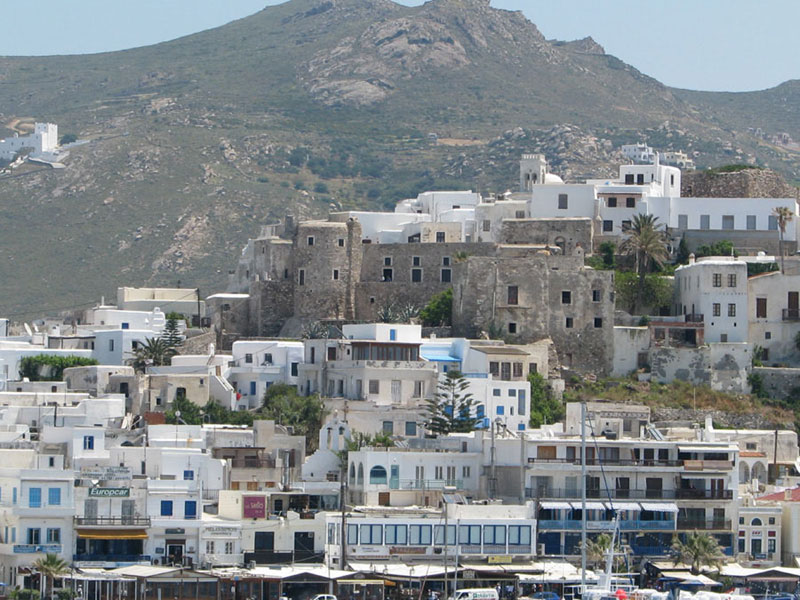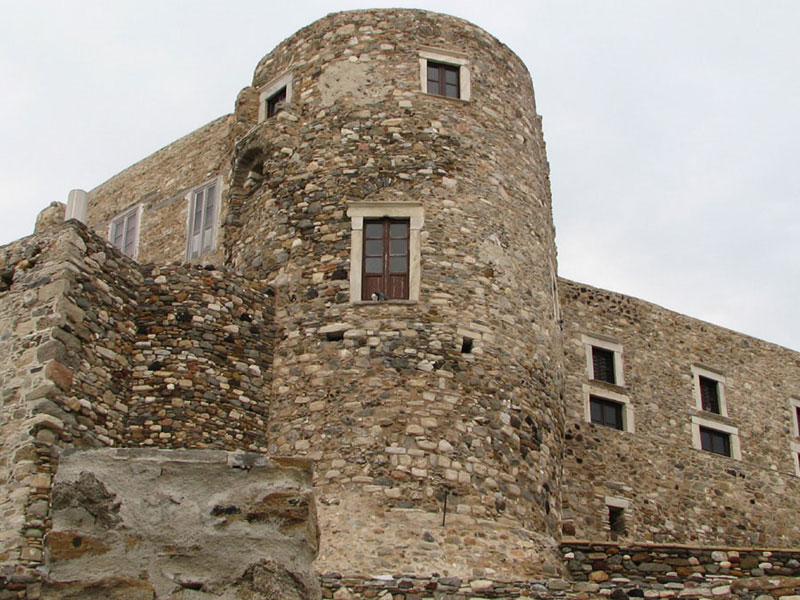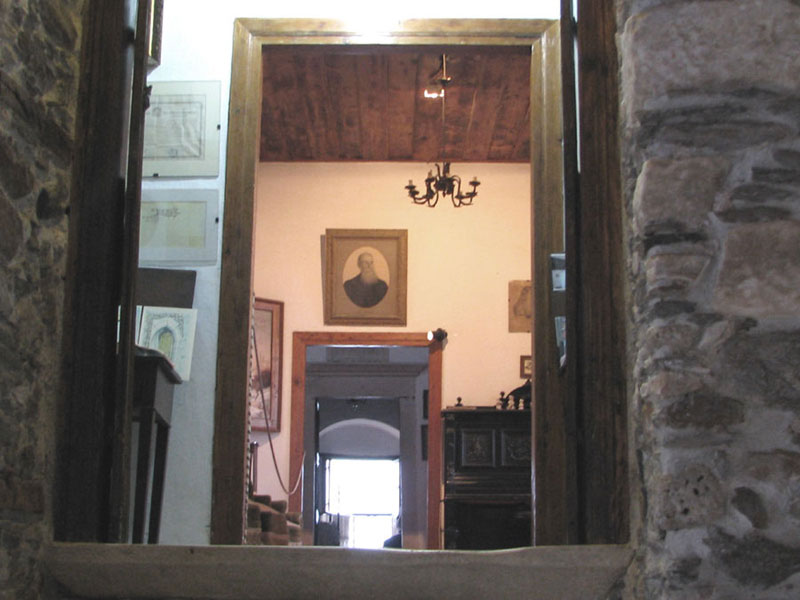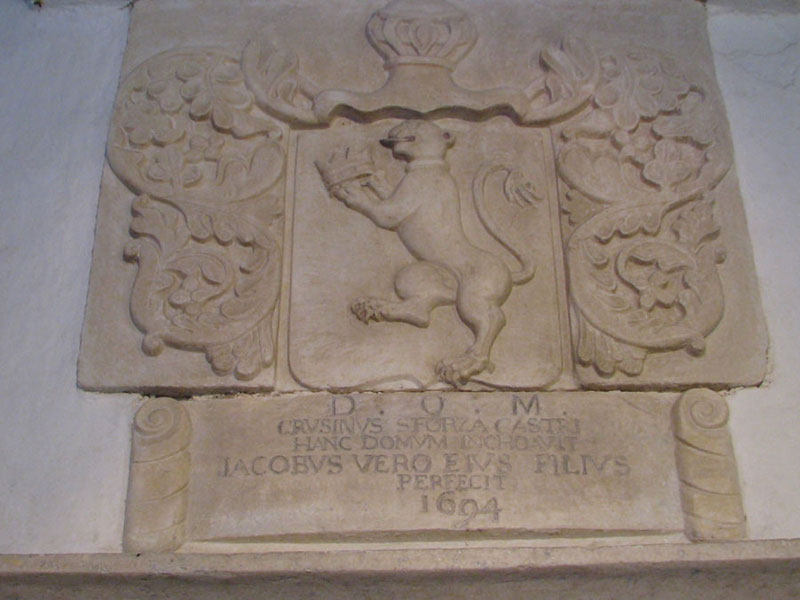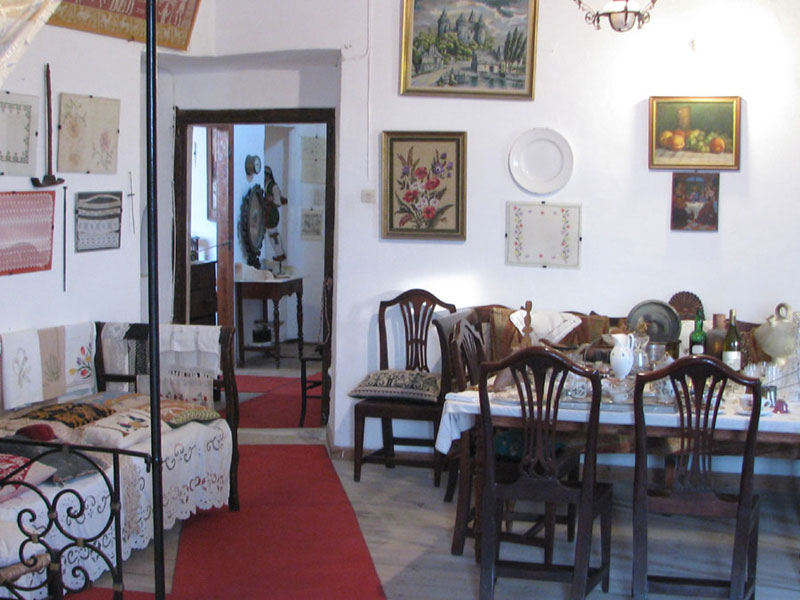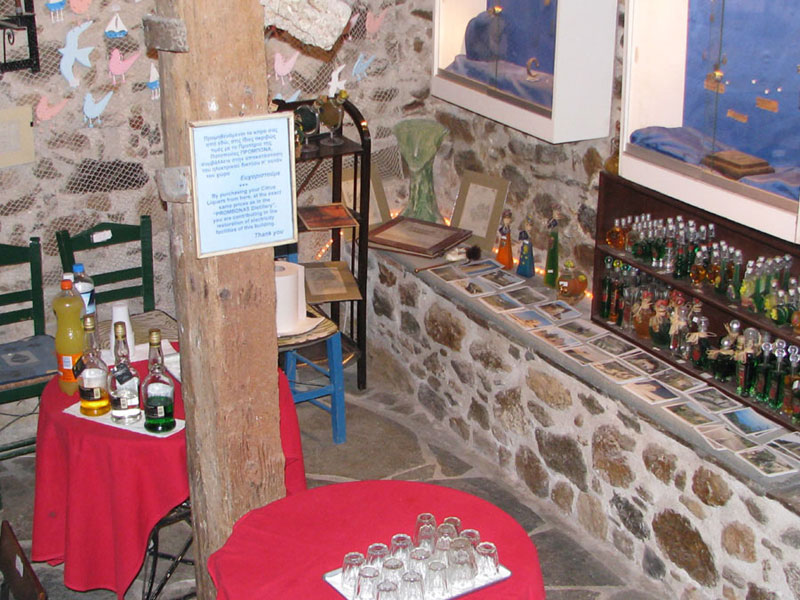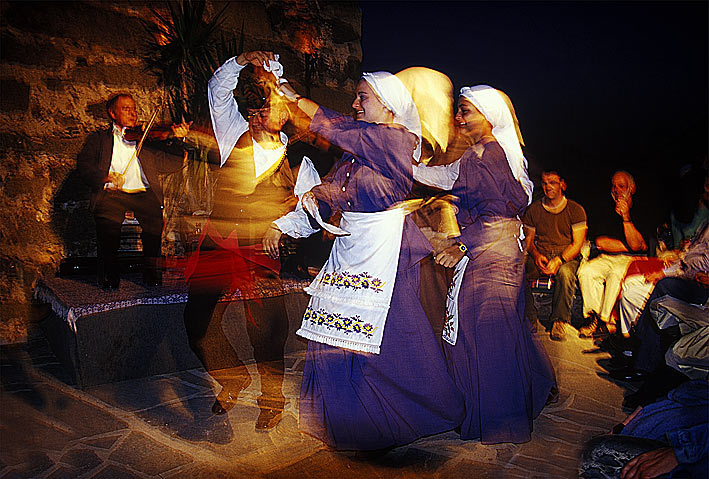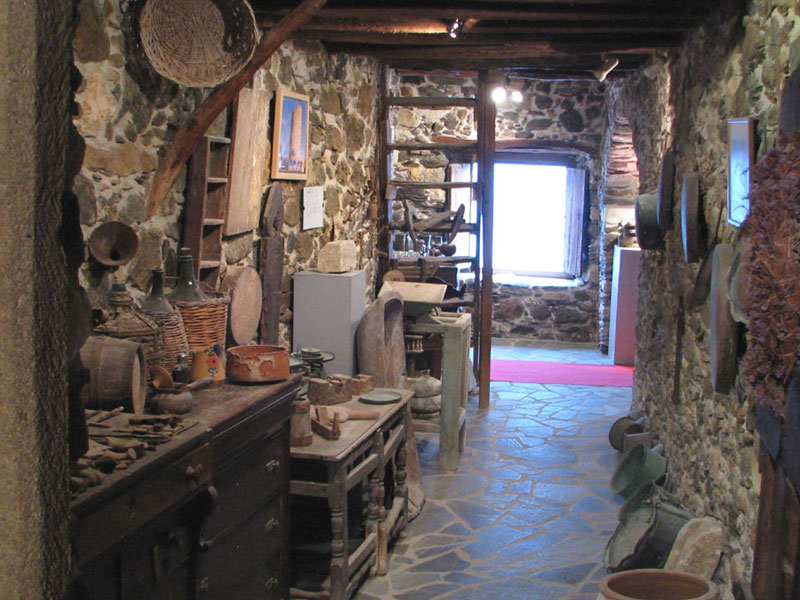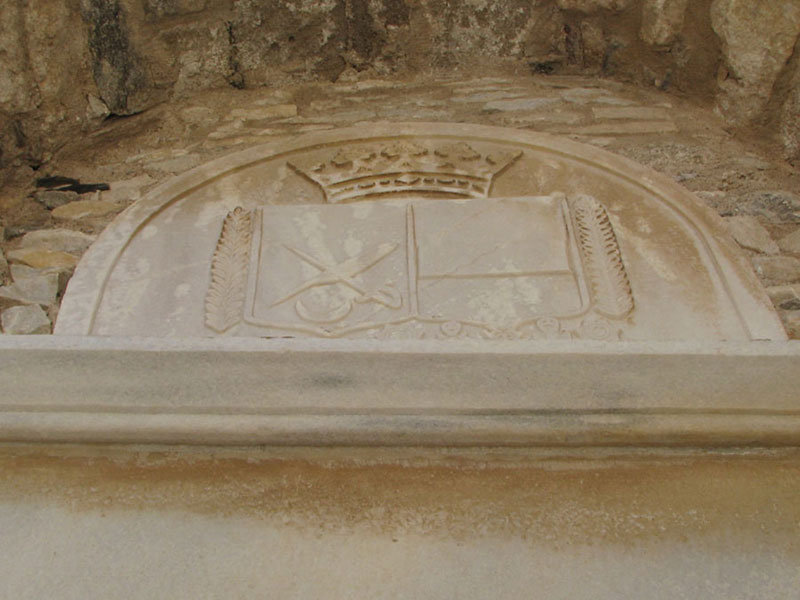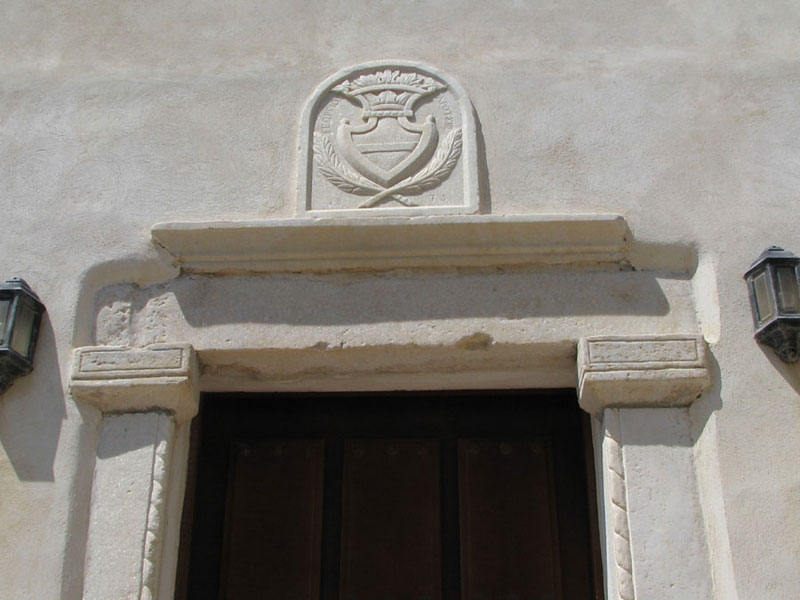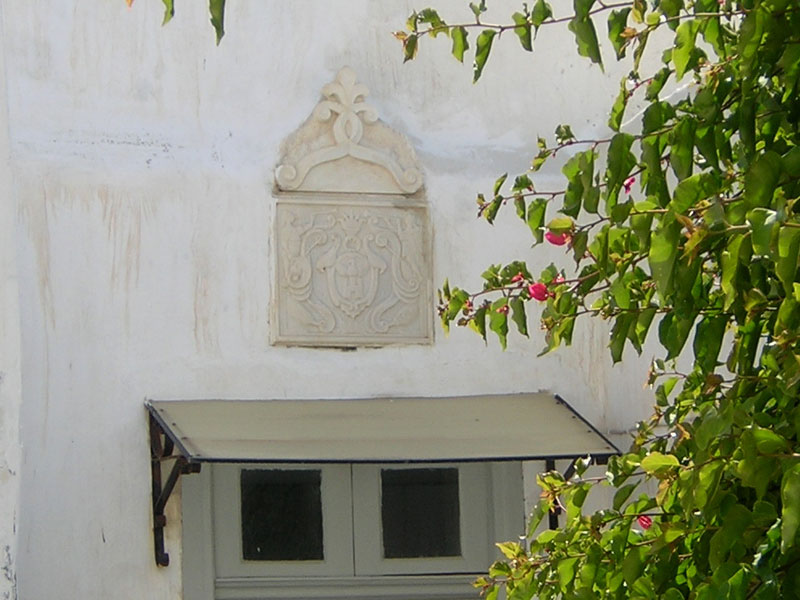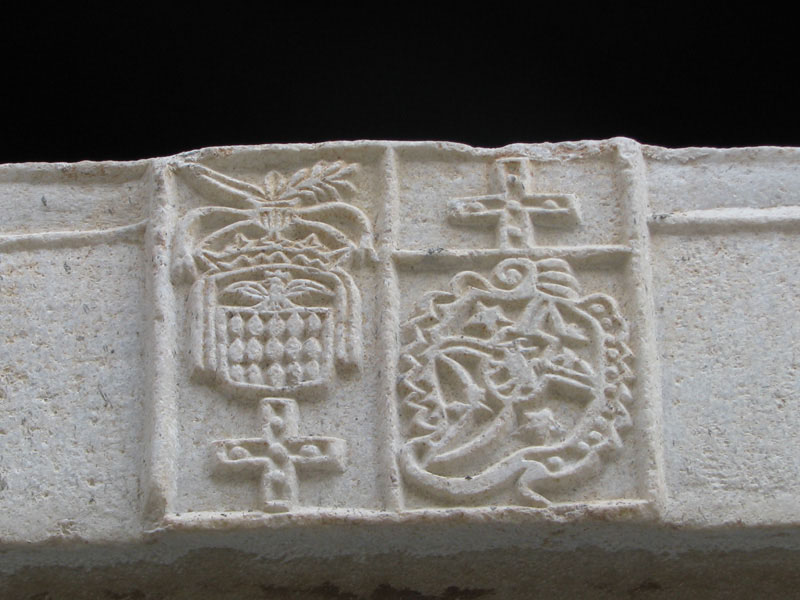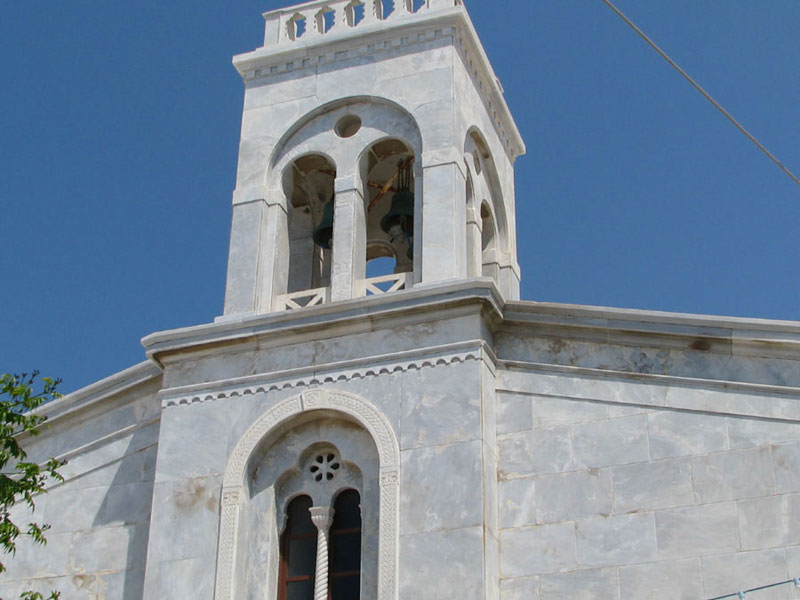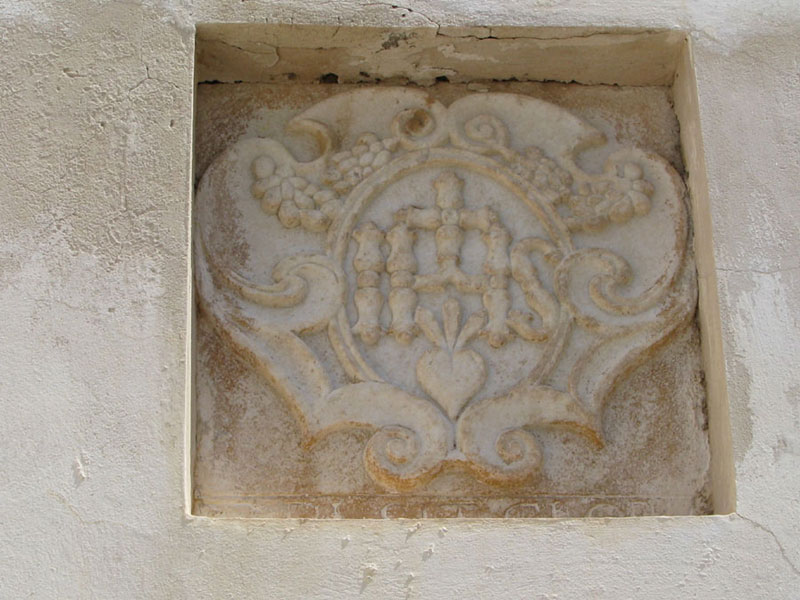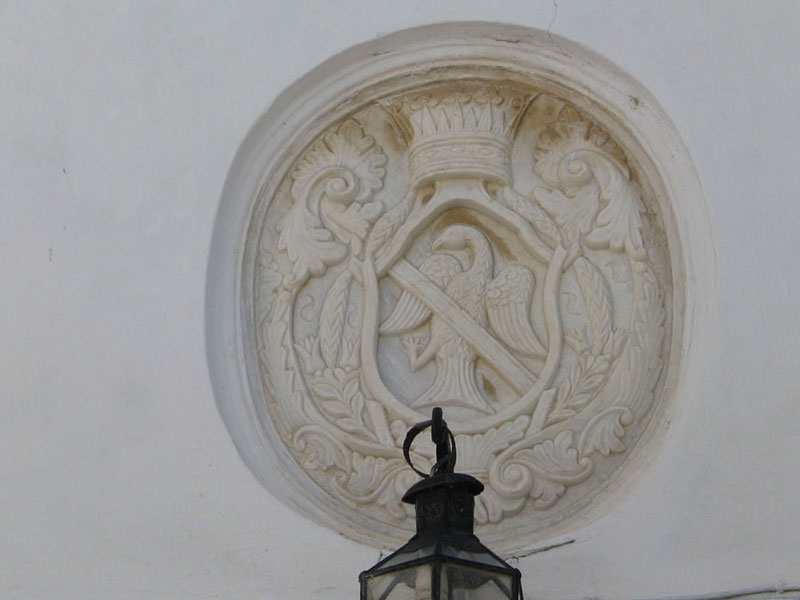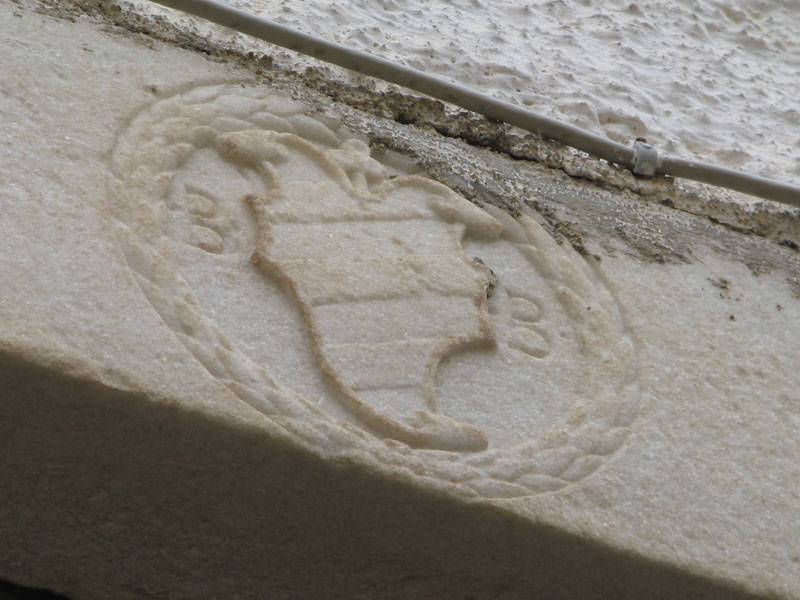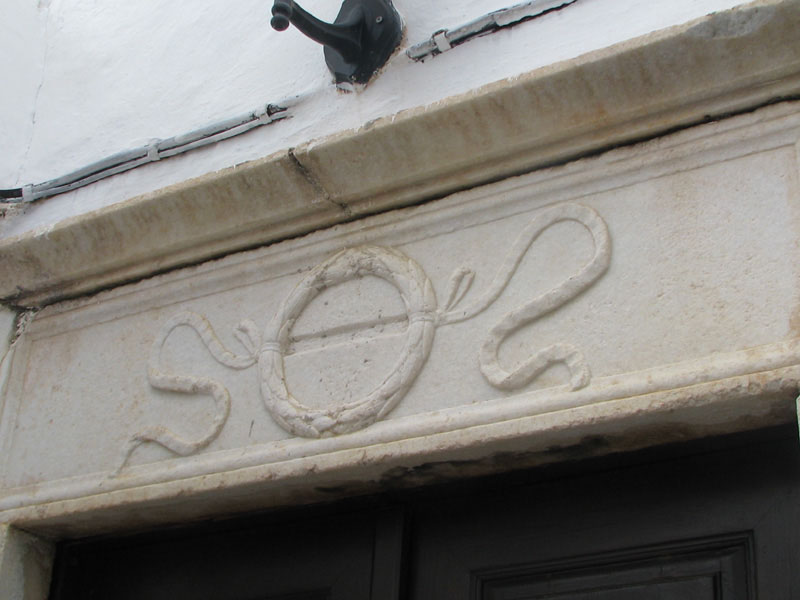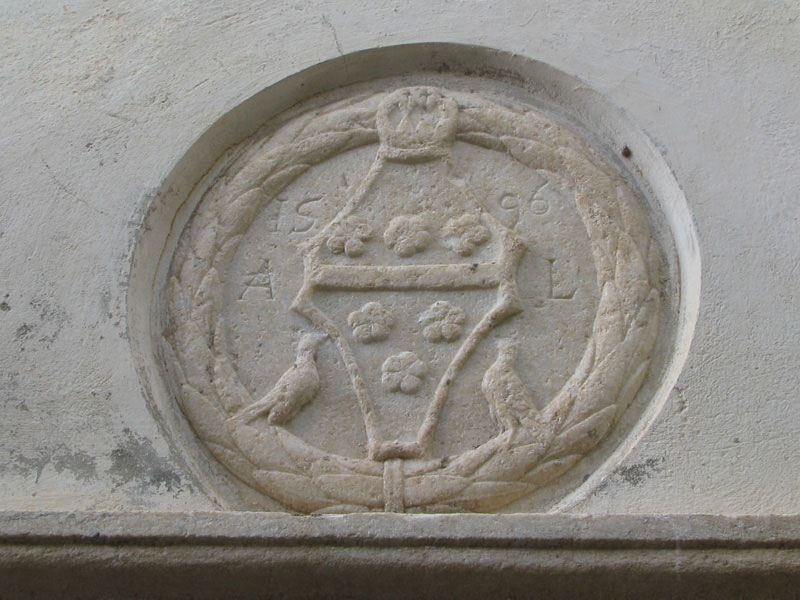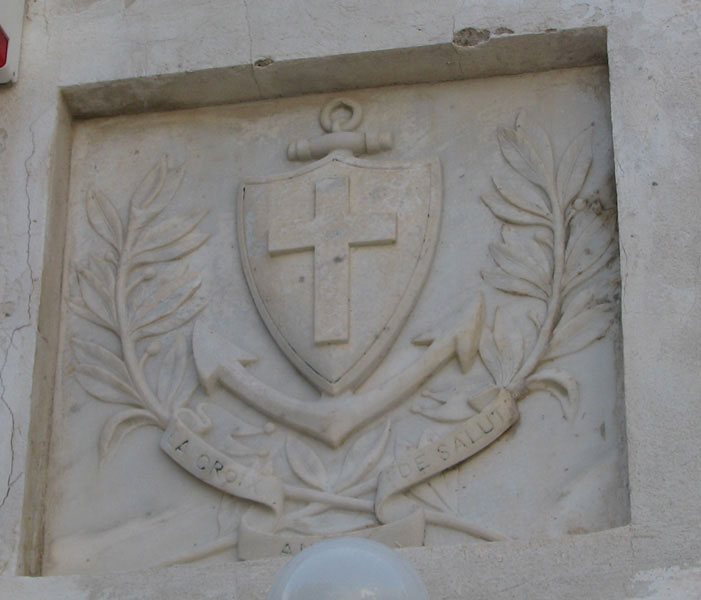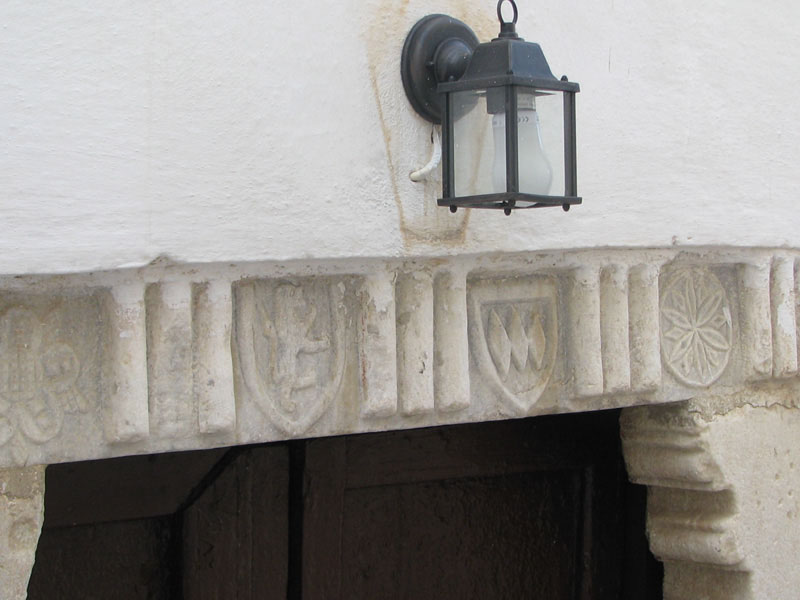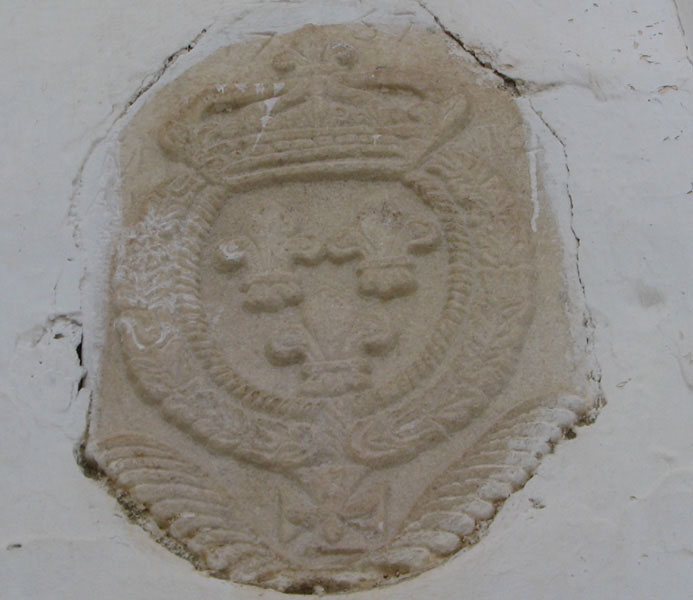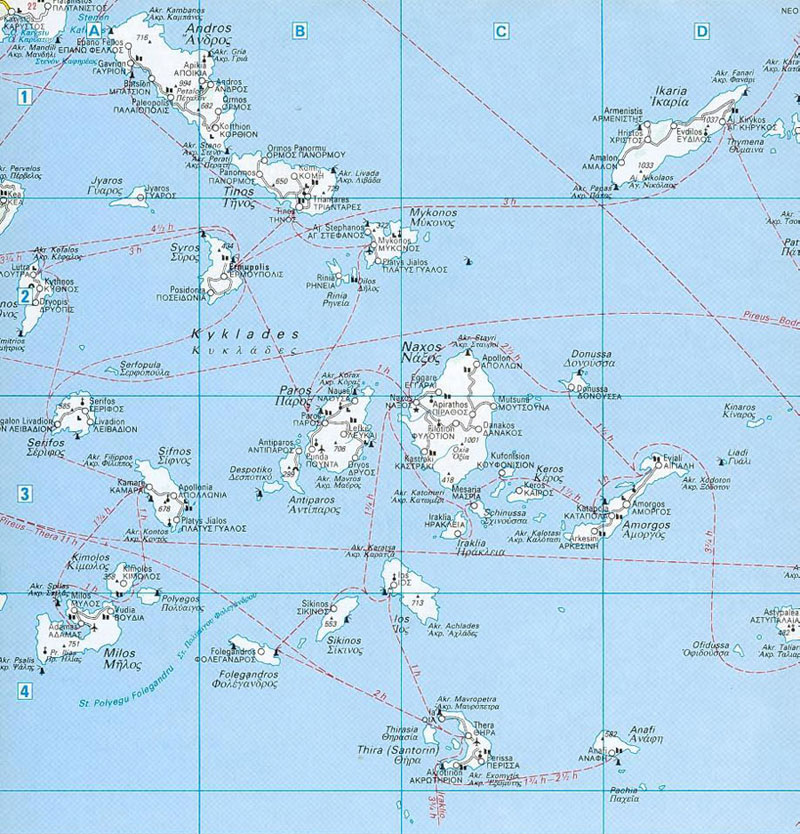|
| The Castro of Naxos viewed from the harbour. |
|
| The ancient defensive Tower of Crispi, the
only one left from the 14 existing during the Venitian period. The Crispi were one of the former controlling Venetian dynasties of the archipelago of the Cyclades. |
|
| The
entrance to the Venetian Museum in Naxos, within the old Castro. |
|
| Coat of arms within the museum house, placed at the door top of the former Italian Consul’s office, but not belonging to the Barozzi family. It belongs to the Sforza Castri family, it is obvious that the mansion that nowadays houses the Museum, has changed a lot of landlords! |
|
| A section of the Venetian Museum in Naxos. |
|
| The basement section of the Venetian Museum in Naxos, home to many of the performances held here. |
|
| Folk dancers at the Venetian Museum, Naxos. |
|
| Part of the Venetian Museum in Naxos. |
|
| The central castro is where the Catholic community is concentrated and most of the doors are topped with the coat of arms of these old Venetian origin families. This one belongs to the Barozzi, who used to be a ‘dragoman’ [translator, often with a semi-advisory function] to the Sultan, thus the Turkish crescent insignia and feather pens. |
|
| The insignia of another Barozzi, Georgios Barozzi. |
|
| The
legacy of the Latin past in the Castro of Naxos: This is the coat of arms
of the GIUSTINIANI family. Unfortunately, there are no Giustiniani left
on the island of Naxos. The coat-of-arms is found on the front door of the
house, which today belongs to Ms. Louisa BAROZZI, who should be the last
living member of the old Latin Barozzi family. She is married to an Englishman
and so, the Barozzi name is going to become locally extinct. |
|
| A
doorway in the Castro district of Naxos surmounted with the coat-of-arms
of the Grimaldi family, the same family that rules over the Principality
of Monaco. The “Grimaldi” originated from Genoa (Italy). One branch of this
family established itself in Monaco, when, at the same time, the other branch
of the family was established on the island of Chios. From Chios they came
to Naxos and “lasted” about two centuries. Today there are no Grimaldis
left on Naxos. The house does not belong to them. It was bought by a Naxian
family, not related to them. Their house served as the Swedish Consulate
in Naxos (the right hand insignia is that of the Royal family of Sweeden). Giacomo-Giuseppe GRIMALDI was a famous Naxian historian who wrote
a book about the history of Naxos, never published but forms part of the
“Naxos Archives Collection” - all information courtesy of Constantinos Sfikas, 2007. |
|
| The tower of the Roman Catholic church within the Castro. |
|
| The coat-of-arms of the order of the Jesuits. |
|
| A rather elegant coat-of-arms of the Frangopoulos family, that at a later time also served as the British Consulate. |
|
| Crest of the Bellonia family. |
|
| The Barozzi - Della Stik crest, the former house of Nicos’s mother’s parents house (she was nee Angela della Stik), and the building also once served as the French consulate. |
|
| Crest of the Loredano family. Of this family Francesco III was the duke of Naxos, however he was susceptible to attacks of schizophrenia and on the 15th August 1510 he tried to kill his wife while still in bed with her. She left the house in a hurry and sought sanctuary with he aunt on the island of Ios, however 2 days later he was back, breaking down the front door of the house, sword in hand. The wife hid herself under the furniture, however the servant reported her location and he was able to cut her down to pieces with sword blows. The local aristocracy were not going to have a murderer as a duke, so they prepared to revoke that position of his and pass it instead to his 11 year old son. Again our assailant was informed and at the dinner table lunged at him with a knife. Others present prevented him for carrying out that deed and he was placed in prison in Crete, and died there during another seizure a year to day after he had killed his wife. |
|
| The crest of the Jesuit school of commerce and maritime trade. |
|
| The union through a marriage of 2 families is symbolized here between the Orthodox Mavregeris (the crest on the left - an illustrious family) and the Catholic Crispi family (the crest on the right). |
|
|
| The insignia of the French king on the wall of the Ursuline convent, bestowing royal protection on the building and its occupants. |
|
| Click here to view archive views of Naxos. |
